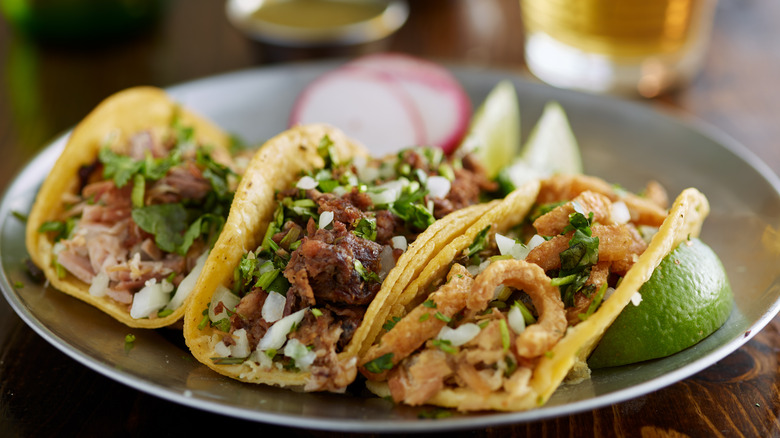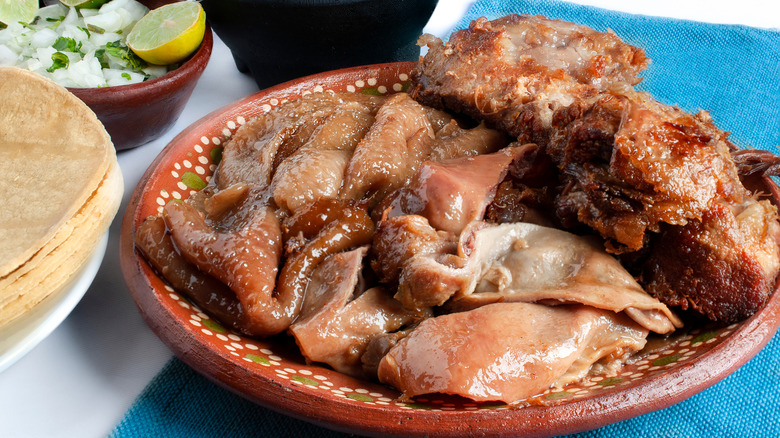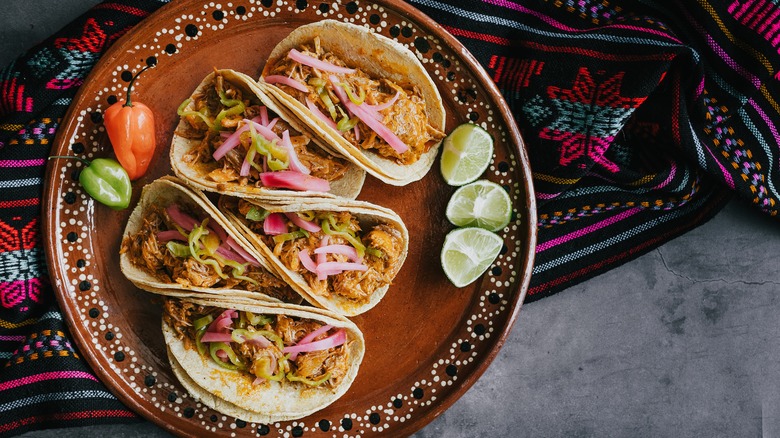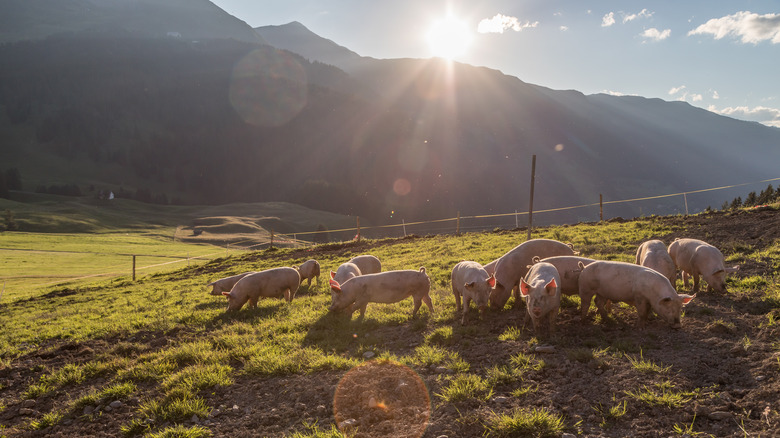Tacos De Buche: The Delectable Pork Stomach Tacos You Should Know
Tacos are an iconic Mexican food, with warm tortillas wrapped around a hearty stuffing and eaten with a variety of salsas and spices, there are few foods more satisfying than a quality taco. The origin of the taco is shrouded in quite a bit of mystery. Corn tortillas were invented as far back as 10,000 BC and have been an aspect of the Mexican diet ever since (via Alto Hartley). On the other hand, ingredients like pork, beef, and salsa came much later.
The tacos of today are not exactly what the ancient peoples of Central America were enjoying. The modern taco's origin, according to the Smithsonian Magazine, is unknown, but a few theories believe that the taco became popular during the 18th and 19h centuries and has continued to capture the hearts and minds of food lovers since then. Now we have all kinds of tacos; smoked chicken tacos, beer-battered fish tacos, and smoked pork tacos. There is an unadulterated love for these stuffed tortillas that make them a staple comfort food in the West, but there is one particular kind of taco that is notoriously known for its tender meat and comforting warmth: Tacos de buche.
How they're made
So, what exactly are tacos de buche? And why do they stand out from other styles of tacos? Tacos de buche are pork stomach tacos. Pork is a popular protein in the Americas and China for its cultural significance. Many cultures find a way to use every part of the pig, including its stomach, to make some divine-tasting dishes. The pork stomach is tender, soft, and chewy after being cooked, but before it is put over the fire, Serious Eats says the raw stomach is rinsed through distilled white vinegar to reduce its natural pungency. The meat is then parboiled, chopped, placed in a soup pot, and put on simmer for hours until tender.
MasterClass describes the tacos as having a dark, intense meatiness from the stewed buche, paired with some fresh and sometimes acidic toppings such as salsa, limes, and cilantro; these ingredients are then wrapped in a soft, warm corn tortilla. Tacos de buche are quite popular and are often found at taquerias.
Tacos de buche ingredients
When we think of tacos today, we probably imagine a standard type of meat, like seasoned chicken or beef, piled with pico de gallo, sour cream, and shredded cheese, but that is not exactly what tacos de buche will taste like. The Price of Meat says that the meat used in tacos de buche is milder and commonly used in stews, chilis, and carne asadas because organ meat is traditionally less expensive than other cuts and is delicious and tender when slow-cooked.
Foods Guy suggests serving the pork with acidic or pickled veggies because buche absorbs the darker flavors of the broth and ingredients it is stewed with and tastes lovely when paired with refreshing ingredients which liven it up. Corn tortillas are your best bet for these tacos, as they are the standard in traditional Mexican cuisine, and the flavor compliments the ingredients. If you have a family recipe for classic corn tortillas, you should break it out for your tacos de buche night.
The history of tacos de buche
Though tacos de buche are considered a staple Mexican dish, the heart of the recipe, buche, is not native to the Mexican diet. Before the Spanish conquistadors brought over the pig, no swine existed in the Americas (via Pig Progress). The conquistadors brought over many Iberian, Neapolitan and Celtic pigs which were then adopted into the diet of Central and South Americans. We Are Chefs says that pigs had originally been brought over to feed the European conquerors, but as the conquistadors destroyed much of Native civilization, many of their food sources were destroyed, and they were forced to adapt.
Pork is now widely used in many Central and South American recipes. According to Productos Real, every part of the pig is used in Mexican cuisine to prevent food waste. After centuries of intermingling between the Native and Spanish cultures throughout Mexico, it makes sense that most of the Mexican dishes today are a blend of both traditional Central American food (corn tortillas and acidic veggies) and Spanish ingredients (pork).



